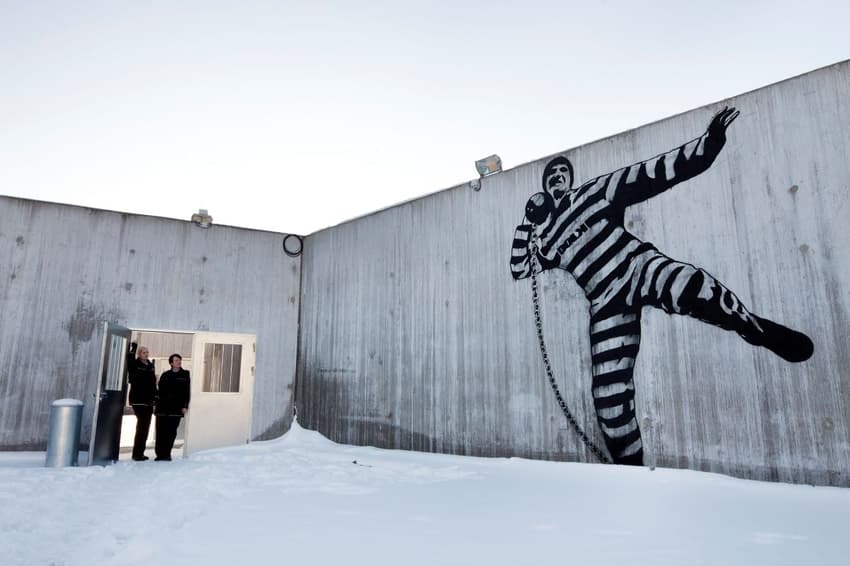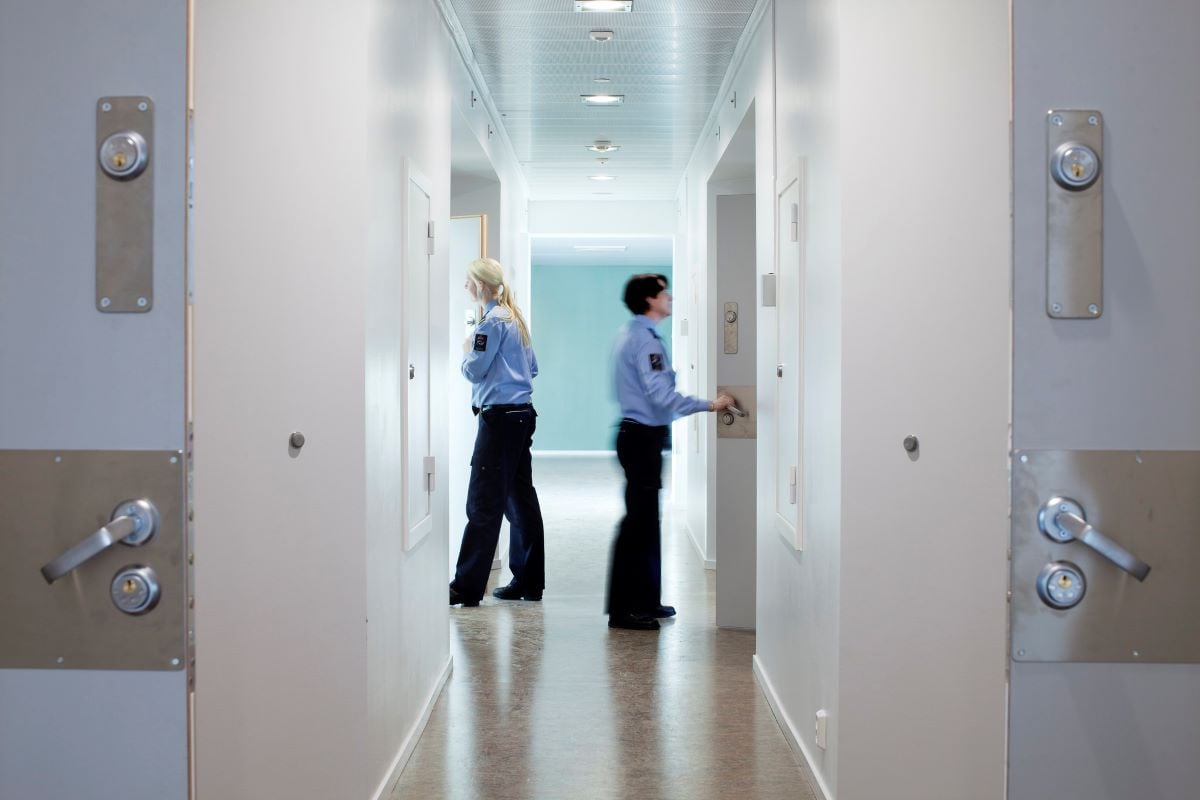EXPLAINED: How different is the Norwegian prison system really?

Norway's prison system is renowned globally for humane treatment of inmates and for low reoffending rates. How different is it really?
How special is the approach taken by the Norway's prison services?
Norway's prison service operates under a so-called "principle of normality".
"The punishment is the restriction of liberty; no other rights have been removed by the sentencing court," the Norwegian Correctional Service explains on its website. "Therefore, the sentenced offender has all the same rights as all others who live in Norway. No one shall serve their sentence under stricter circumstances than necessary for the security in the community."
This means that the prison service is required to make life as normal as possible for inmates, with all efforts made to allow them, if possible, to maintain family relationships and friendships and to enjoy the same health and education services they might have enjoyed on the outside.
A part of this system is the so-called "import model", which means that health, education, library books and other services are supplied by the local municipal and regional governments, just as they would be for any other citizen.
Norway is not alone in taking this approach.
The Council of Europe recommends that prison conditions should "approximate as closely as possible the positive aspects of life in the community", and prison services in other countries, on paper, subscribe to the normalisation principle.
But Norway's prison service has since the 1980s been unusually well-funded, with 1.2 inmates per staff member, according to 2020 statistics from the Council of Europe.
This was the highest staff-to-inmate ratio of any major country, and it means staff can devote more time to rehabilitation and preparing inmates for reentering society. In the UK, there are 3.3 inmates per member of staff, in Turkey 5.9 and in Russia 9.1.
Norway also benefits from a relatively low prison population rate.
In Norway there are only 54 prisoners per 100,000 people, of whom fully 29 percent are "foreigners", according to the UK's Institute for Crime & Justice Policy Research. In Europe, only Finland (51) and Iceland (36) have a lower incarceration rate.
In England and Wales, on the other hand, there are 146 prisoners per 100,000 people, and in the US, there are 531, nearly ten times Norway's rate.

The corridors in Halden Prison. Photo: Norwegian Correctional Service
How different are Norway's prisons in practice?
The commitment not to impose "stricter circumstances than necessary" still leaves room for quite restrictive treatment if this is seen as "necessary".
In 2018, the UN Committee against Torture published a report criticising Norway's "high rates of prolonged isolation" for remand and sentenced prisoners, which, it said, "amounts to solitary confinement".
It referred to a report in Bergens Tidende newspaper that a detainee in a Bergen city prison had been subject to isolation in a security cell for almost 1,700 hours over the previous two years. The Council of Europe has made similar complaints.
According to the World Health Organisation, Norway also has one of the highest rates of prison suicide in Europe.
A study by The Lancet from 2017 found that 180 out of 100,000 prisoners in Norway committed suicide every year, compared to 176 in France, 104 in Sweden, 103 in Finland, 91 in Denmark, and much lower figures in most other European countries. Between 2018 and 2022, 25 people in high-security prisons committed suicide in Norway, and there were 287 suicide attempts.
In the Norwegian media, a suicide at Bredtveit women's prison near Oslo has led to heavy coverage of the poor conditions at the prison, with overuse of solitary confinement and poor mental health among inmates. Built in 1918, the prison was used to hold political prisoners during Nazi Germany's occupation of Norway and is one of several older prisons in Norway with relatively poor and run-down facilities.
At the other end of the spectrum, modern, low-security prisons like the Bastøy and the Halden prison -- which both feature frequently in the international media -- genuinely are unusual in the liberties, responsibilities and opportunities given to inmates.
At Halden, prisoners have opportunities to learn skills and get qualifications, while at Bastøy, an island, there are no fences or walls, and all prisoners have jobs.

An inmate works at his computer in his cell. Photo: Norwegian Correctional Service/Flickr
How low are reoffending rates in Norway?
A study commissioned by the Norwegian Correctional Services found that Norway's reconviction rate -- the percentage of inmates reconvicted within two years of release was 18 percent in 2018 (the most recent year covered). This compared to 32 percent in Sweden and Denmark, 33 percent in Finland, and 21 percent in Iceland. The recidivism rate in Norway is about 25 percent after five years.
In the UK, in contrast, the recidivism rate is almost 50 percent after just one year.

A prisoner buys crisps and vegetables at a supermarket in a prison in Norway. Photo: Norwegian Correctional Service/Flickr
How much does it cost?
Norway's prison service is not cheap, but it is also not that much more expensive than those of countries with much worse results.
According to the Correctional Service's 2022 report, a place in a high-security prison costs 1,238,000 kroner (€104,000) in 2022, while a place in a low-security prison costs 878,300 kroner (€74,000). This compares to an annual cost of an inmate in the UK of about £48,000 (666,909 kroner).
Given that the UK has nearly three times the incarceration rate as Norway, the average Norwegian actually spends less in tax on prisons than the average Briton.
Comments
See Also
How special is the approach taken by the Norway's prison services?
Norway's prison service operates under a so-called "principle of normality".
"The punishment is the restriction of liberty; no other rights have been removed by the sentencing court," the Norwegian Correctional Service explains on its website. "Therefore, the sentenced offender has all the same rights as all others who live in Norway. No one shall serve their sentence under stricter circumstances than necessary for the security in the community."
This means that the prison service is required to make life as normal as possible for inmates, with all efforts made to allow them, if possible, to maintain family relationships and friendships and to enjoy the same health and education services they might have enjoyed on the outside.
A part of this system is the so-called "import model", which means that health, education, library books and other services are supplied by the local municipal and regional governments, just as they would be for any other citizen.
Norway is not alone in taking this approach.
The Council of Europe recommends that prison conditions should "approximate as closely as possible the positive aspects of life in the community", and prison services in other countries, on paper, subscribe to the normalisation principle.
But Norway's prison service has since the 1980s been unusually well-funded, with 1.2 inmates per staff member, according to 2020 statistics from the Council of Europe.
This was the highest staff-to-inmate ratio of any major country, and it means staff can devote more time to rehabilitation and preparing inmates for reentering society. In the UK, there are 3.3 inmates per member of staff, in Turkey 5.9 and in Russia 9.1.
Norway also benefits from a relatively low prison population rate.
In Norway there are only 54 prisoners per 100,000 people, of whom fully 29 percent are "foreigners", according to the UK's Institute for Crime & Justice Policy Research. In Europe, only Finland (51) and Iceland (36) have a lower incarceration rate.
In England and Wales, on the other hand, there are 146 prisoners per 100,000 people, and in the US, there are 531, nearly ten times Norway's rate.

How different are Norway's prisons in practice?
The commitment not to impose "stricter circumstances than necessary" still leaves room for quite restrictive treatment if this is seen as "necessary".
In 2018, the UN Committee against Torture published a report criticising Norway's "high rates of prolonged isolation" for remand and sentenced prisoners, which, it said, "amounts to solitary confinement".
It referred to a report in Bergens Tidende newspaper that a detainee in a Bergen city prison had been subject to isolation in a security cell for almost 1,700 hours over the previous two years. The Council of Europe has made similar complaints.
According to the World Health Organisation, Norway also has one of the highest rates of prison suicide in Europe.
A study by The Lancet from 2017 found that 180 out of 100,000 prisoners in Norway committed suicide every year, compared to 176 in France, 104 in Sweden, 103 in Finland, 91 in Denmark, and much lower figures in most other European countries. Between 2018 and 2022, 25 people in high-security prisons committed suicide in Norway, and there were 287 suicide attempts.
In the Norwegian media, a suicide at Bredtveit women's prison near Oslo has led to heavy coverage of the poor conditions at the prison, with overuse of solitary confinement and poor mental health among inmates. Built in 1918, the prison was used to hold political prisoners during Nazi Germany's occupation of Norway and is one of several older prisons in Norway with relatively poor and run-down facilities.
At the other end of the spectrum, modern, low-security prisons like the Bastøy and the Halden prison -- which both feature frequently in the international media -- genuinely are unusual in the liberties, responsibilities and opportunities given to inmates.
At Halden, prisoners have opportunities to learn skills and get qualifications, while at Bastøy, an island, there are no fences or walls, and all prisoners have jobs.

How low are reoffending rates in Norway?
A study commissioned by the Norwegian Correctional Services found that Norway's reconviction rate -- the percentage of inmates reconvicted within two years of release was 18 percent in 2018 (the most recent year covered). This compared to 32 percent in Sweden and Denmark, 33 percent in Finland, and 21 percent in Iceland. The recidivism rate in Norway is about 25 percent after five years.
In the UK, in contrast, the recidivism rate is almost 50 percent after just one year.

How much does it cost?
Norway's prison service is not cheap, but it is also not that much more expensive than those of countries with much worse results.
According to the Correctional Service's 2022 report, a place in a high-security prison costs 1,238,000 kroner (€104,000) in 2022, while a place in a low-security prison costs 878,300 kroner (€74,000). This compares to an annual cost of an inmate in the UK of about £48,000 (666,909 kroner).
Given that the UK has nearly three times the incarceration rate as Norway, the average Norwegian actually spends less in tax on prisons than the average Briton.
Join the conversation in our comments section below. Share your own views and experience and if you have a question or suggestion for our journalists then email us at [email protected].
Please keep comments civil, constructive and on topic – and make sure to read our terms of use before getting involved.
Please log in here to leave a comment.